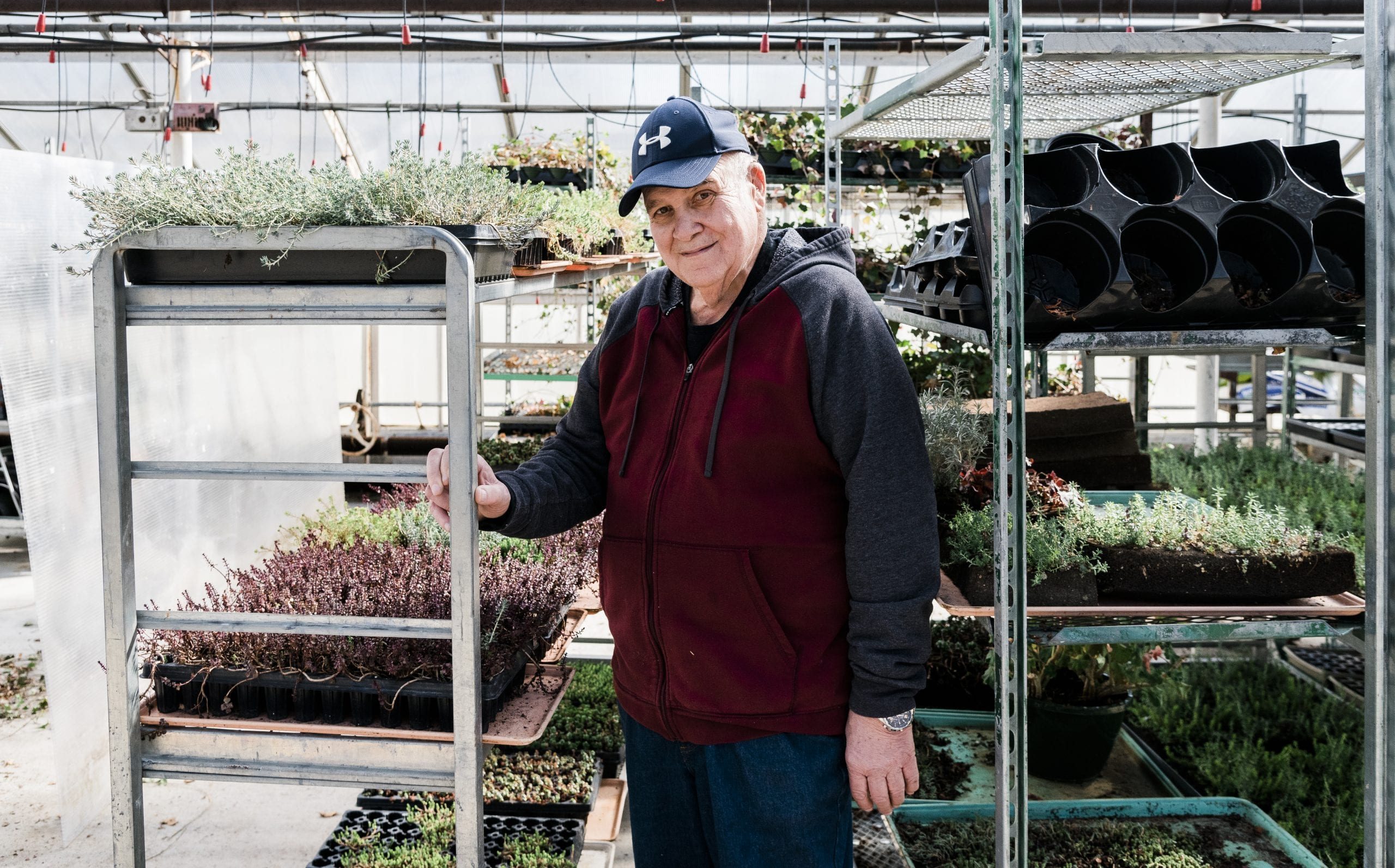SAUGUS — After 12 years of development — and after a fire destroyed a large portion of his farm in 2011 — Saugus’ Allan Huberman is finally ready to share his WaterGrip technology with the world.
As he walked through a large greenhouse on his Vine Street property one unusually warm February day, the agriculturalist and nursery owner explained in detail how his flat, rectangular slabs of growing material — called “brownies” — provide plants with high doses of nutrients, hormones, and good bacteria to produce optimal growing conditions while using considerably less water than typical soils.
“Just make a hole (on the surface), take out the soil, dump the plant in, you’re all done,” he said, demonstrating on one of the brownies. “You can put any plant you want, and you can’t kill it.”
He gestured to a brownie that held a single perennial.
“I haven’t touched this for months. He needs water, but I wanted to see how long it was going to last.”
Huberman began developing WaterGrip in 2008 because he wanted to find a greener solution to current gardening practices, which he said often use chemicals that are hazardous to both the environment and human health.
The process wasn’t all smooth sailing, however. In July of 2011, much of Huberman’s property was destroyed after a deadly gasoline tanker truck crash resulted in an explosion that, by many accounts, caused a storm of fire to rain down along Route 1.
Engulfed in flames hundreds of feet high, several of Huberman’s buildings succumbed to the blaze.
Fortunately, the Saugus Fire Department was able to extinguish the fire before it reached the greenhouse that housed Huberman’s then-developing WaterGrip technology.
Although he told news outlets at the time he’d sustained millions in losses, Huberman was undeterred. He continued to test his invention, presenting it to state legislatures and private companies, who he said have all shown interest in his product.
“My material is nice and clean. It’s made very, very sterile, and it encapsulates any water impurities,” Huberman said. “Water is only used when the plants need it, and it encapsulates nitrogen and phosphorus, which is what the EPA is trying to get rid of.”
He added his technology is currently the best on the market when it comes to building “green roofs” — roofs covered in vegetation — which are becoming increasingly popular in urban areas as global environmental concerns grow.
“It’s the most sustainable green roof in the world,” Huberman said, adding his material is also affordable.
Traditional growing material requires constant irrigation and has little absorption of storm runoff, Huberman explained, and green roofs that use this material are expensive and necessitate extensive care.
“There’s a tremendous amount of maintenance with green roofs,” he said. “(It costs) $10,000, $20,000 a year just to maintain them.”
According to Huberman, WaterGrip brownies are meant to reduce roof load, support growth of a wide selection of plants, maintain uniform water conditions, reduce mess, promote rapid root growth, and decrease stormwater runoff.
The brownies, which require 50 to 75 percent less water than traditional green roof materials, stay moist due to their macro-micro pore structure, which he says guarantees healthy plants and healthy roots.
“‘Together we can save the water of the world,’ that’s our slogan,” Huberman said. “Putting water where it counts. Clean the air we breathe, clean up pollution, make our environment a healthier place to live.”
Stephen Herbert, a professor and former director at the University of Massachusetts’ Stockbridge School of Agriculture, has worked with Huberman since 2010 and has helped him test WaterGrip. Herbert corroborated Huberman’s claims that his creation is as sturdy as it seems, and added he hopes WaterGrip results in more locally-grown food.
“Environmentally, this would probably be better,” he said. “There are ways to integrate this into agriculture and into home gardens. During the second World War, they had victory gardens that provided 40 percent of the food supply. If we got back into home gardening, then we could integrate this into those sorts of situations.”
Why has it taken Huberman 12 years to declare his WaterGrip technology ready for the market? Huberman said he wanted to be sure his technology passed every test it was given, although he added there hasn’t been much of a trial and error process because his brownies have performed to his expectations every time.
“There haven’t been any issues. I want to find issues, but I can’t,” he said.

